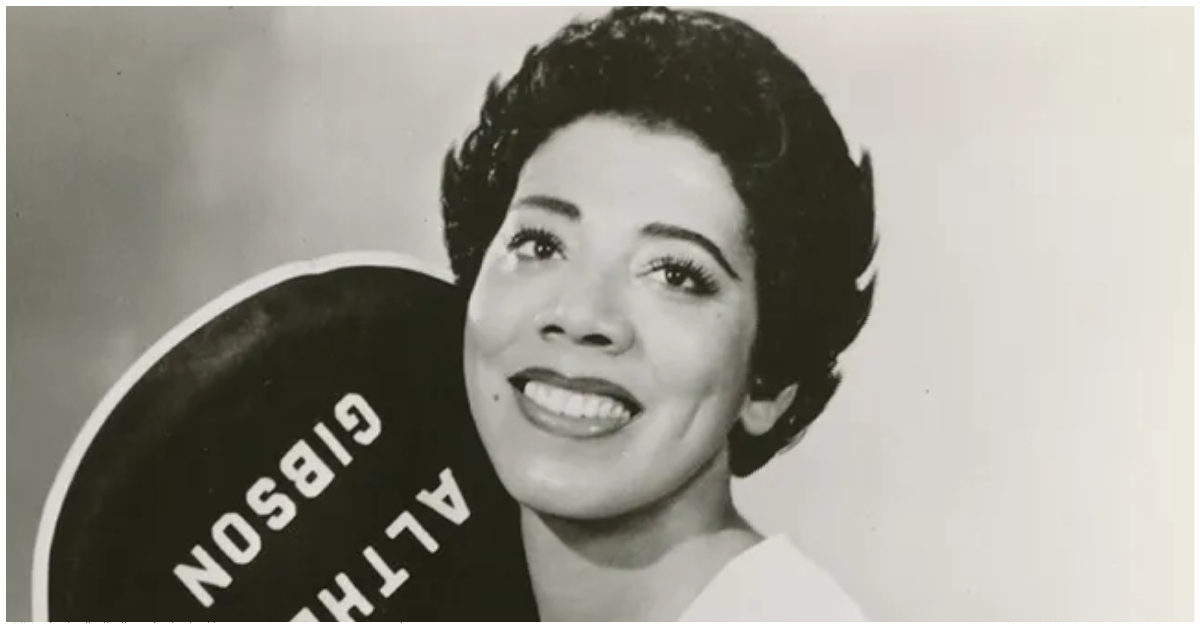As Althea Gibson stepped onto the grass courts of Wimbledon in 1957 and defeated Darlene Hard to become the first Black athlete to win a Grand Slam title, it was a watershed moment in the history of tennis and sports. Gibson’s triumph was the culmination of years of barrier-breaking achievements in the face of racial discrimination.
Overcoming Segregation And Racism To Reach The Top
Gibson was no stranger to the injustices of segregation and racism. Growing up in Harlem in the 1930s and 40s, she honed her skills in the American Tennis Association, an organization founded because Black players were barred from the United States Lawn Tennis Association (USLTA). Despite being the best women’s player in Black tennis circles, Gibson was denied entry to the prestigious U.S. Nationals in 1950.
It was not until after player-turned-journalist Alice Marble publicly called out the USLTA for its discriminatory practices that Gibson was finally allowed to compete that year. While she lost in an epic 3-set thriller to Louise Brough, Gibson proved she could compete with the world’s best.
Over the next few years, Gibson continued her meteoric rise, winning titles regularly on the ATA tour and finishing runner-up in women’s doubles at Wimbledon in 1956 paired with British star Angela Buxton. Still, Gibson endured segregation and racism even as she reached the upper echelons of the previously whites-only tennis world. “Shaking hands with the Queen of England was a long way away from being forced to sit in the colored section of the bus going into downtown Wilmington, North Carolina,” she later reflected.
Conquering Wimbledon And The World
By 1957, Gibson was primed for a breakthrough, and it arrived on July 6 at Wimbledon when she dismissed Darlene Hard 6–3, 6–2. As she gratefully accepted the winner’s trophy from Queen Elizabeth II and danced at the Wimbledon Ball that evening, Gibson had claimed her rightful place at the pinnacle of tennis.
The Wimbledon title was just the beginning, as Gibson captured the U.S. Nationals a few months later. In 1958, she again reigned supreme at both Wimbledon and the U.S. Nationals, capping her career with 11 Grand Slam titles, including 5 singles crowns. For years, Gibson had been forced to fight not just opponents across the net, but also societies’ prejudices. With her determination and incredible talent, she conquered them all to change tennis forever.
Enduring Hardships And Leaving A Lasting Legacy
Yet even after ascending to world No. 1 and international stardom, injustices followed Gibson. Turned away from hotels and restaurants due to the color of her skin, Gibson soon retired from tennis, later explaining “you can’t eat a crown.” She tried golf next, breaking barriers on the LPGA tour as well.
While relatively quiet on racial issues during her playing career, Gibson spoke out more pointedly on discrimination later in life. She briefly coached young Black stars Zina Garrison and Leslie Allen in the 1970s, passing on wisdom from her trailblazing career.
Althea Gibson passed away in 2003 after a remarkable life defined by breaking barriers. In 2019, the U.S. Tennis Association commemorated her legacy with a statue at Arthur Ashe Stadium. Each year the U.S. Open is played, millions are reminded of how Gibson forever changed tennis and expanded possibilities for people of color in sports.





